Diffraction
This lesson covers:
- How waves can be represented as wavefronts
- What diffraction is
- How wavelength and gap size affect diffraction through a gap
- How wavelength affects diffraction at an edge
Waves can be represented as wavefronts
In order to understand diffraction, you need to know that waves can be represented as wavefronts. A wavefront is effectively a line connecting the same point on each wave. In the diagram below we have drawn 3 wavefronts corresponding to the 3 peaks of the transverse waves.
The distance between two adjacent wavefronts is the wavelength.
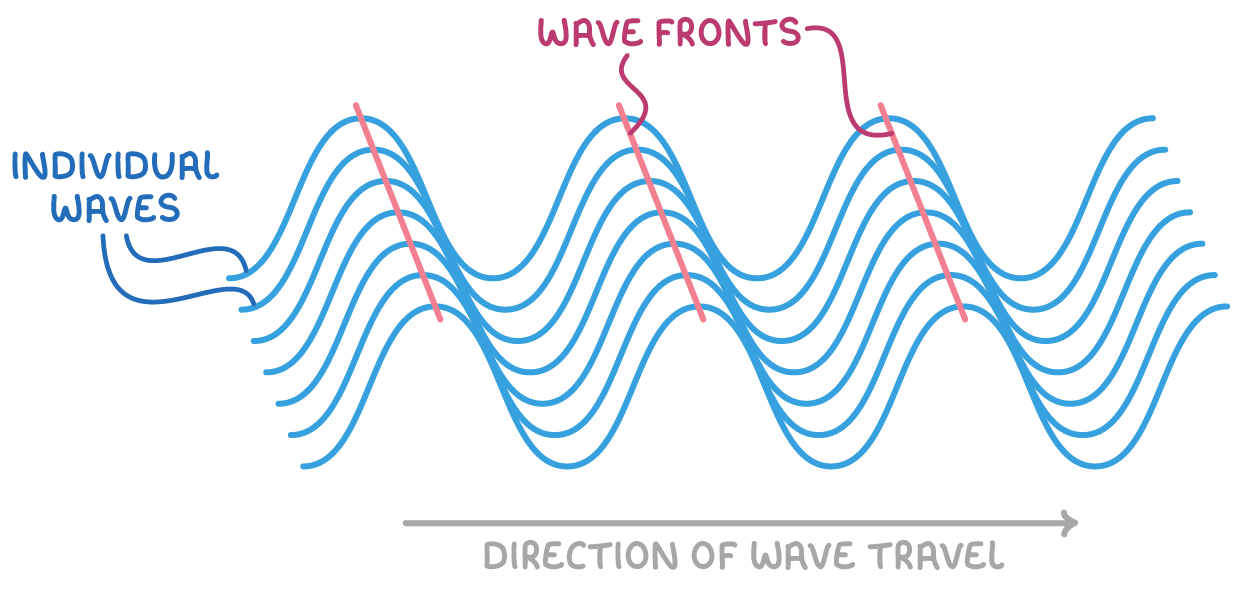
What is Diffraction?
Diffraction is the phenomenon where waves spread out and change direction as they pass through a gap or around an obstacle.
Examples of diffraction include:
- Sound waves spreading out as they pass through a doorway.
- Water waves spreading out as they pass through the gap in a harbour wall.
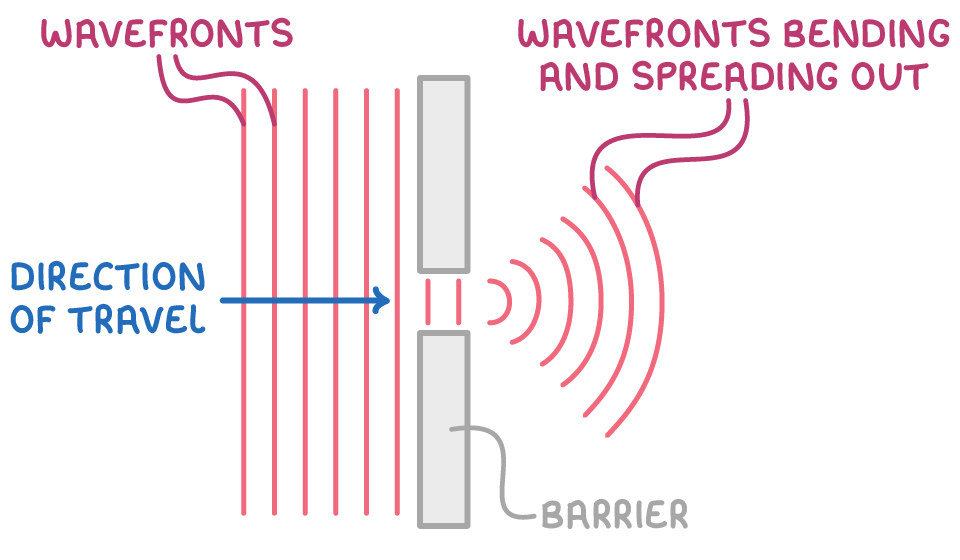
Factors that affect the amount of diffraction The amount of diffraction depends on the relationship between two factors:
|
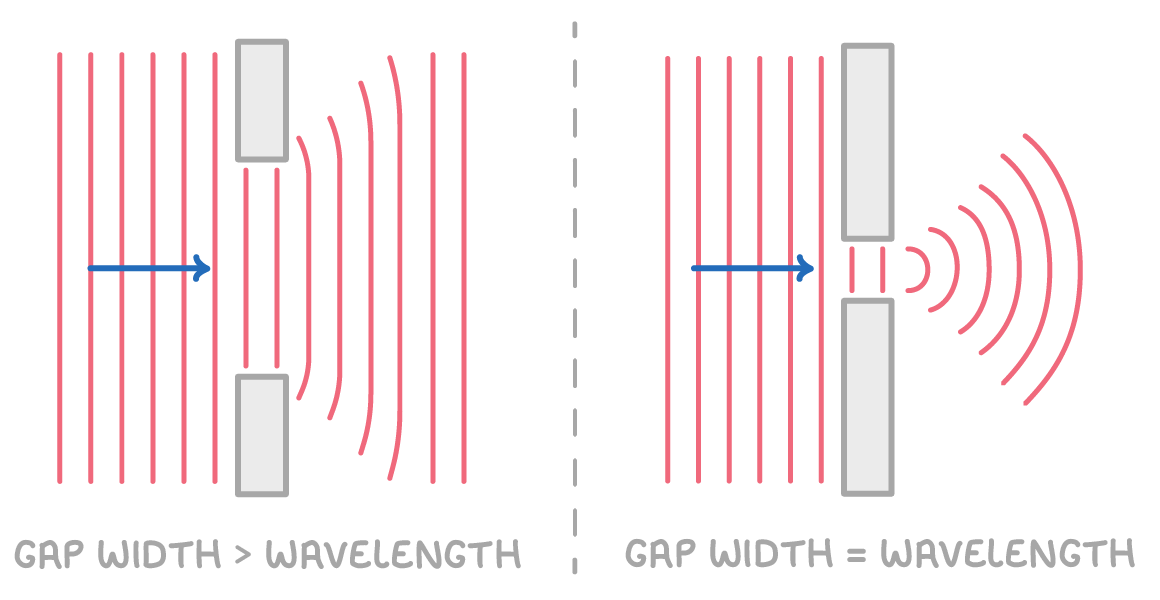 |
|
Diffraction at edges Waves also undergo diffraction as they pass the edge of an object. To see how wavelength affects the amount of diffraction, we can compare radio waves (very long wavelength) to microwaves (shorter wavelength). |
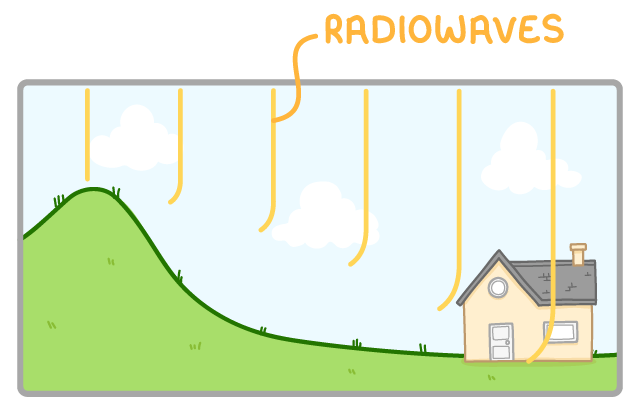 As radio waves have a long wavelength, they diffract a lot as they pass over the hill. This allows the radio waves to reach the house. |
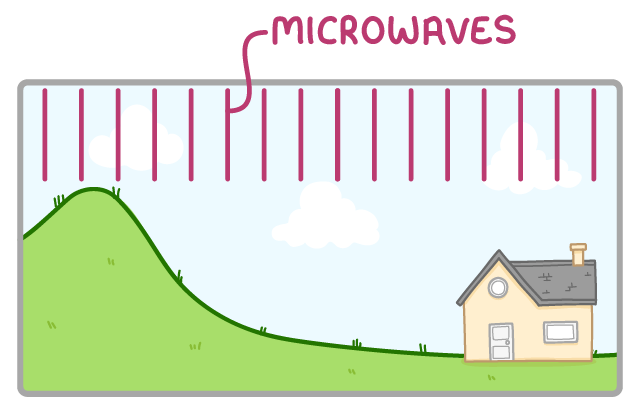 Microwaves have a much shorter wavelength though. This means that they experience less diffraction, and so don't reach the house. |
Which of the following affects the amount of diffraction through a gap?
the amplitude of the waves
the wavelength of the waves
the size of the gap
|
What happens to waves as they pass the edge of an object?
they absorb into the edge
they diffract around the edge
they refract through the edge
|
Which of the following would result in the most diffraction?
a gap size small than the wavelength
a gap size equal to the wavelength
a gap size much bigger than the wavelength
|
What is meant by the term 'diffraction'?
The spreading out and bending of waves as they travel through a vacuum
Waves which have oscillations perpendicular to the direction of wave motion
The spreading out and bending of waves as they pass a gap or an edge
Waves which can travel at the speed of light
|
Which of the following would result in the most diffraction?
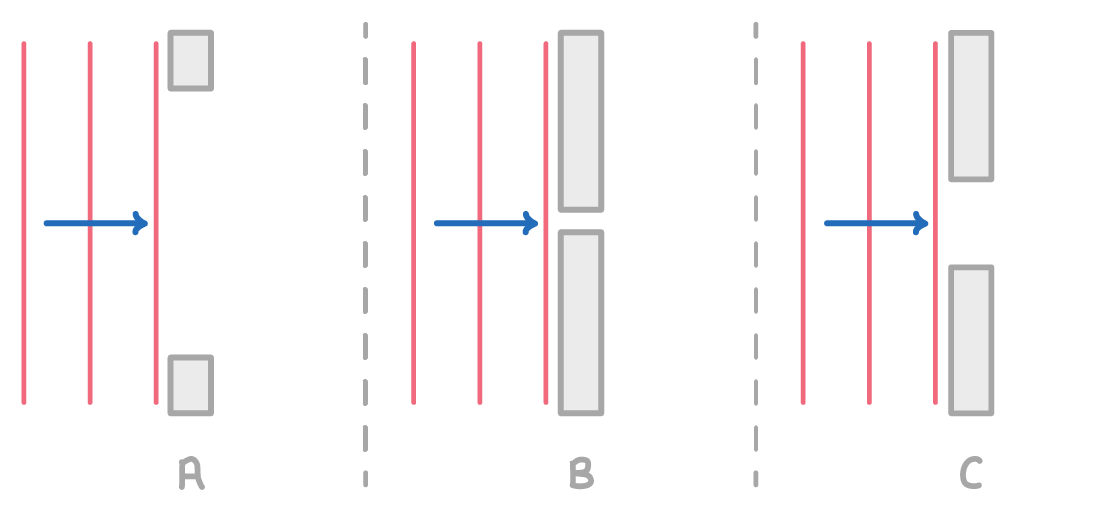
A
B
C
|